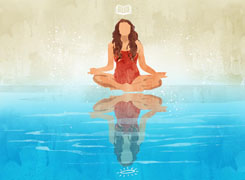Hi Sir, I am Planning to invest 6000 INR each in the following mutual funds to achieve 1 cr in 10 years.
1) ICICI Prudential Bluechip Fund Direct Growth
2) Nippon India Large Cap Fund Direct Growth
3) Motilal Oswal Midcap Fund Direct-Growth
4) ICICI Prudential Retirement Fund - Pure Equity Plan Direct - Growth
5) Tata Small Cap Fund Direct Growth
Can I achieve it with the above portfolio to achieve 1cr in 10 years or do I need to change anything?
Ans: Assessment of Your Current Investment Portfolio
You have thoughtfully selected five mutual funds, allocating Rs 6,000 to each, with the goal of achieving a corpus of Rs 1 crore in 10 years. This is a commendable step toward your financial future, and I appreciate the clarity of your objective. However, let’s delve deeper into whether this specific portfolio is likely to help you achieve your goal, what modifications (if any) might enhance its effectiveness, and how to best manage your risk along the way.
Portfolio Breakdown:
Diversity in Fund Selection: You have included funds across multiple categories: large-cap, mid-cap, small-cap, and a retirement-focused equity fund. This ensures that your portfolio is diversified across different market segments, which is a positive step. A diversified portfolio helps spread risk and captures the growth potential of different types of companies.
Large-Cap Funds: The inclusion of two large-cap funds adds a layer of stability to your portfolio. Large-cap companies tend to be well-established, financially stable businesses that are less volatile compared to mid-cap or small-cap companies. They may not offer the highest returns, but they are more likely to provide consistent and steady growth.
Mid-Cap and Small-Cap Funds: The inclusion of mid-cap and small-cap funds introduces an element of high growth potential. Mid-cap and small-cap funds are more volatile but can provide higher returns over a long period. This is particularly useful for a 10-year horizon, as it allows enough time for these funds to ride out market fluctuations and deliver higher returns.
Retirement-Focused Fund: While retirement-specific funds often come with certain lock-in periods or restrictions on withdrawals, they are designed for long-term growth. However, the overall role of this fund in your portfolio depends on its growth potential compared to other equity funds.
Let’s now discuss whether this portfolio can realistically help you achieve your Rs 1 crore target and whether adjustments are necessary.
Targeting Rs 1 Crore in 10 Years
Achieving a corpus of Rs 1 crore in 10 years requires careful planning and realistic expectations. Let’s break it down further to evaluate whether your current strategy will help you achieve this goal.
Expected Returns on Mutual Funds:
Historical Returns: Historically, equity mutual funds have delivered an average return of around 10% to 12% annually. This average includes both bull and bear market phases. However, it’s crucial to understand that returns fluctuate, and past performance doesn’t guarantee future returns.
Required Returns: To achieve Rs 1 crore in 10 years with a total monthly investment of Rs 30,000, you would need an annual return of approximately 12% to 15%. While this is achievable, it’s slightly on the aggressive side. Your mid-cap and small-cap funds may provide the necessary boost, but they also carry higher risk.
Consistency in Investment:
Discipline with SIP: Achieving your goal is not only about the expected returns but also about consistency. Staying disciplined with your SIPs (Systematic Investment Plans) is crucial. Markets will fluctuate, and during periods of downturn, there might be a temptation to stop or reduce your SIPs. However, this is when staying consistent with your investments can pay off the most.
Top-up SIPs: Consider increasing your SIP contributions periodically. Even small increments in your SIP amounts can significantly boost your long-term returns. If your income increases over the next 10 years, allocate a portion of that increase to your SIPs. This will help you accelerate your wealth-building process.
Risk Management:
Market Fluctuations: The equity market is inherently volatile. Over a 10-year period, you will experience both bullish and bearish phases. The key is to remain invested during market downturns, as this is when you buy more units of mutual funds at lower prices. Over time, the market tends to recover, and your long-term returns will benefit from this strategy.
Asset Allocation: Your portfolio is entirely equity-focused. While this is suitable for high-growth goals like Rs 1 crore in 10 years, it does expose you to high volatility. If you are comfortable with this level of risk, an all-equity portfolio is fine. However, if market volatility worries you, consider introducing some debt or hybrid funds for risk mitigation.
Importance of Diversification
Diversification is key to managing risk. Let’s analyze whether your current portfolio is adequately diversified and how you can improve its balance.
Sectoral and Market-Cap Diversification:
Large-Cap Funds: Large-cap funds provide exposure to well-established companies. While they offer stability, the growth potential is typically moderate. Having two large-cap funds in your portfolio ensures that a significant portion of your investments is in stable, less volatile stocks. However, you must check for sectoral diversification within these large-cap funds to avoid concentration risk.
Mid-Cap and Small-Cap Funds: Mid-cap and small-cap funds offer higher growth potential but come with increased volatility. These funds perform well in bullish markets but can underperform during bearish phases. Ensure that your mid-cap and small-cap funds are diversified across various sectors to reduce the impact of sector-specific downturns.
Retirement Fund: Retirement-focused equity funds often have longer lock-in periods and may not offer the flexibility of regular equity funds. Ensure that the retirement fund you have chosen is not too concentrated in any one sector or stock. It should also align with your overall investment strategy for achieving Rs 1 crore.
Avoiding Overlap:
Fund Overlap: One important aspect to check is whether the mutual funds you’ve chosen have overlapping stocks. Too much overlap between funds reduces the benefits of diversification. If two or more of your funds hold significant portions of the same stocks, you are not truly diversifying your portfolio. This could expose you to greater risk if those particular stocks or sectors underperform.
Regular vs Direct Mutual Funds
You have opted for direct mutual fund plans, which have lower expense ratios compared to regular plans. While this approach saves you money in terms of costs, there are certain disadvantages to managing your investments without the guidance of a Certified Financial Planner.
Disadvantages of Direct Plans:
Lack of Guidance: Direct plans may be cost-effective, but they do not come with expert advice. Without professional help, you may miss out on strategic adjustments that could enhance your portfolio’s performance. A Certified Financial Planner can offer insights into market conditions, fund performance, and asset allocation, which can make a significant difference in the long run.
Time-Consuming: Managing a direct plan requires you to stay updated on fund performance, market trends, and when to rebalance your portfolio. If you lack the time or expertise to do this consistently, you may miss out on crucial opportunities or fail to make timely decisions.
Benefits of Regular Plans:
Professional Guidance: A regular plan, though slightly more expensive due to higher expense ratios, comes with the benefit of professional advice. A Certified Financial Planner can help you select the right funds, monitor your portfolio, and make adjustments based on your financial goals and market conditions.
Tailored Strategy: With a regular plan, you receive a customized investment strategy that aligns with your goals. This can be particularly useful when working toward a long-term goal like Rs 1 crore, where market conditions and personal circumstances may change over time.
Mid-Cap and Small-Cap Exposure
Mid-cap and small-cap funds are an essential part of your portfolio, offering higher growth potential compared to large-cap funds. However, these funds come with higher risk, and it’s important to assess whether your current allocation is suitable for your risk tolerance.
Mid-Cap Funds:
Growth Potential: Mid-cap funds invest in companies that are in the growth phase of their business cycle. These companies have higher growth potential than large-cap companies, but they are also more volatile. Over a 10-year horizon, mid-cap funds can deliver strong returns, but you must be prepared for short-term fluctuations.
Market Sensitivity: Mid-cap companies are more sensitive to economic changes and market sentiment. In times of economic uncertainty, mid-cap stocks tend to underperform, but they can rebound strongly during market recoveries. Ensure that your mid-cap fund is diversified across sectors to reduce risk.
Small-Cap Funds:
High Risk, High Reward: Small-cap funds invest in smaller companies that have the potential for exponential growth. However, they are also the most volatile category of mutual funds. While the returns can be impressive, small-cap funds are more likely to experience significant short-term declines.
Long-Term Investment: Small-cap funds require patience. They tend to underperform during market downturns but can deliver strong returns over the long term. Given your 10-year horizon, small-cap exposure can work in your favor, but it should be complemented with more stable investments to balance the risk.
Retirement-Focused Fund
Your portfolio includes a retirement-focused equity fund, which is designed for long-term wealth accumulation. However, there are some considerations to keep in mind with retirement-specific funds.
Lock-in Period:
Limited Liquidity: Retirement-focused funds often come with a lock-in period, which restricts your ability to withdraw funds before a certain age. While this is fine for long-term goals like retirement, it may limit your flexibility if you need access to your funds for other purposes.
Growth Potential: The growth potential of retirement-focused equity funds can be similar to other equity funds, but it’s essential to review their historical performance. Ensure that the retirement fund is not underperforming compared to other funds in your portfolio.
Alignment with Overall Strategy:
Stock Overlap: Check for any overlap between the stocks held by the retirement fund and the other equity funds in your portfolio. Too much overlap reduces diversification, which can affect your overall returns during market downturns.
Insights
Your goal of accumulating Rs 1 crore in 10 years with a monthly investment of Rs 30,000 is an ambitious and worthwhile target. With the current portfolio of mutual funds, you have a strong foundation, but there are areas where adjustments might improve your chances of achieving this goal.
Evaluating Your Current Portfolio:
Review Fund Performance:
It’s crucial to monitor the performance of each fund regularly. While past performance is not an indicator of future results, it can provide insight into how well the funds are meeting your growth objectives. Ensure that the funds are consistently performing well relative to their benchmarks.
Assessing Fund Overlap:
Avoid duplication of holdings among the funds in your portfolio. If the funds overlap significantly in their stock holdings, the diversification benefit is reduced. Proper diversification helps mitigate risk and capture growth from various sectors.
Balancing Risk and Return:
Your portfolio contains a mix of large-cap, mid-cap, small-cap, and retirement-focused funds. This provides a good balance between stability and growth. However, monitor the proportion of each fund type and adjust as needed to align with your risk tolerance and market conditions.
Investment Horizon:
Given your 10-year investment horizon, you are in a favorable position to benefit from the growth potential of mid-cap and small-cap funds. Ensure that you stay invested through market cycles, as long-term investments can weather short-term volatility and benefit from market recoveries.
Regular Review and Adjustment:
Financial markets and personal circumstances change over time. Regularly reviewing your investment portfolio with a Certified Financial Planner will help ensure that it remains aligned with your goal of accumulating Rs 1 crore. Adjust your investments based on performance, market conditions, and any changes in your financial situation.
Recommendations for Improvement:
Consider Professional Guidance:
While direct mutual fund plans offer lower expense ratios, the absence of professional guidance can be a disadvantage. A Certified Financial Planner can offer valuable insights, help you select the most appropriate funds, and assist with strategic adjustments based on market conditions and your financial goals.
Review and Adjust SIP Amounts:
Regularly assess your ability to increase SIP amounts as your income grows. Even small increases can significantly impact your long-term corpus.
Diversify Further:
Explore additional fund categories or investment options if your current portfolio shows signs of overlap or underperformance. Consider including hybrid funds or debt funds for added stability and risk management.
Monitor Fund Charges:
Ensure that you are aware of all charges associated with your investments, including expense ratios, entry and exit loads, and any other fees. Lower costs contribute to better net returns over the long term.
Prepare for Market Volatility:
Understand that market fluctuations are inevitable. Stay committed to your investment plan, and avoid making impulsive decisions based on short-term market movements. Regular investment and patience are key to achieving long-term goals.
Final Thoughts
Your approach to investing in mutual funds is commendable and well thought out. By maintaining a diversified portfolio, regularly reviewing your investments, and seeking professional advice, you can work towards achieving your goal of Rs 1 crore in 10 years.
Remember, investing is a journey, and staying disciplined and informed will help you navigate the ups and downs of the market. Regular reviews and adjustments will keep your investments on track and aligned with your financial aspirations.
Best Regards,
K. Ramalingam, MBA, CFP,
Chief Financial Planner,
www.holisticinvestment.in































